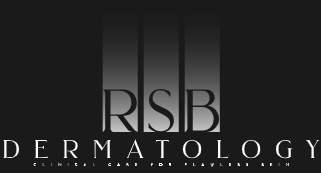Shingles (herpes zoster) is a painful, blistering skin rash that is caused by the varicella-zoster virus, the virus that causes chickenpox.
Causes & Incidence
When someone gets chickenpox, the virus stays dormant (inactive) in certain sensory nerves for the remainder of their life, without any signs or symtoms. For most people, the virus just lays dormant (inactive) and never becomes a problem. For others, the virus may become active again, although only along the affected nerve and not all over the body as is seen with chickenpox. To clarify, one does not catch Shingles from someone else, but it is from the re-activiation of the herpes zoster virus that has stayed dormant in ones system after having chickenpox, usually many decades earlier. It is unknown why the virus becomes active again, often after several or many decades.
One is contagious, can spread the virus to others, as long as blisters are present. The blisters typically last approximately 10 days. If a child or adult who has not had chickenpox and has not been vaccinated for chickenpox comes in direct contact with the shingles rash, they can develop chickenpox, not shingles. Those who have already had chickenpox or have received the chickenpox vaccine already have the virus and therefore are not at risk.
Risk Factors
Shingles can affect anyone who has had chickenpox, although the following persons are more likely to develop the condition:
Those over 60 years of age
One who has had chickenpox before age 1
One who is immunosuppressed, either by disease or medications
Symptoms
Most persons first develop pain, tingling, or burning on one location, on one side of the body, arm, leg, or face. To clarify, one may get the rash on the right side of the face only or just the left leg, but not the left leg and the right arm, which are two different locations. The front and back of the trunk (back and chest) are along a single sensory nerve, so when the chest or abdomen, is affected, the back is affected too on the same side of the body (left or right). The discomfort may be severe and frequently begins before any rash appears. Usually one or two days later, red patches appear followed by clear blisters, fluid-filled sacs of skin. The blisters break or dry up forming small open sores that crust. The crusts usually heal within 2 to 3 weeks and may rarely scar, although skin discoloration is common and may last weeks or months.
Common symptoms:
Pain, burning, or tingling on one side of the body at one location (i.e. one arm OR one leg OR one side of the face OR the left chest and left back OR the right abdomen and right back)
Red rash with clear blisters develops shortly after the discomfort is felt
Fatigue (feeling tired or just not well)
Other possible symptoms include:
Fever
Chills
Headache
Swollen glands (lymphadenopathy)
Joint pain
Abdominal pain
Genital sores
When the face is affected, one may get the rash, have pain and/or muscle weakness on different parts of the face. These symptoms may include:
Ear pain
Hearing loss
Problems with the movement of the eye
Taste disturbance
Vision problems
Drooping eyelid (ptosis)
Difficulty moving some parts of the face
Tests
Most often, the diagnosis is made by your healthcare provider by simple examination (looking at the skin) and asking some questions. Additional testing is rarely needed, but may include one or more of the following:
A Tzank smear
putting blister fluid on a slide, staining it with a special stain, and examining it under the microscope.
A viral culture or rapid test
Blister fluid is sent to the lab and tested to identify the herpes zoster virus
A skin biopsy
The skin is anesthetized using a tiny needle. A small piece of skin is taken and sent to the lab for evaluation
Treatment
Anti-viral medication is often prescribed and is most effective when started within 72 hours of the first onset of pain or before blisters appear. These medications help reduce pain, which can last weeks, months, or longer, help prevent complications, and shorten the course of the disease. The folllowing are commonly used:
Acyclovir
Famciclovir
Valacyclovir
Anti-inflammatory medication, such as Prednisone, may be used to reduce swelling and pain, although is not effective in all persons.
Most patients get adequate pain relief from acetominophen and/or ibuprofen, although narcotics, such as acetominophen with codeine, may be required.
Zostrix, capsaicin cream, may reduce discomfort and may reduce the risk of post-herpetic neuralgia and is available without a prescription.
Cool, wet compresses may reduce pain and help blisters dry up. Calamine lotion can used as well. Colloidal oatmeal baths are sometimes helpful in reducing itching.
Rest is recommended if fever is present.
When blisters are present and oozing, avoid any contact with persons whom have never had chickenpox, especially newborns and pregnant women. Do not reuse contaminated items or clothing. Wash non-disposable items in hot, preferably boiling water, or disinfect them prior to reuse.
